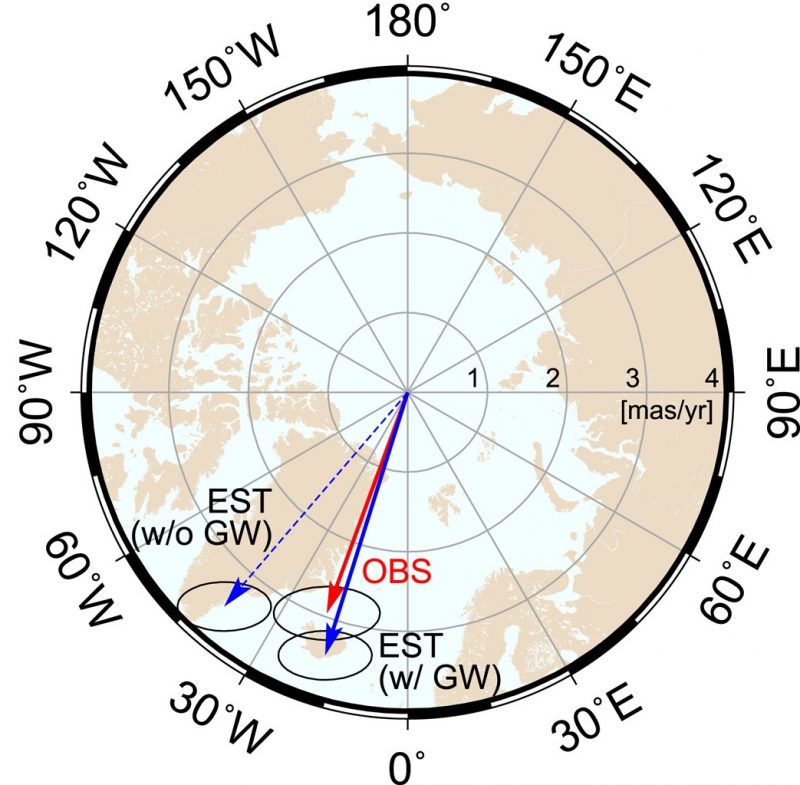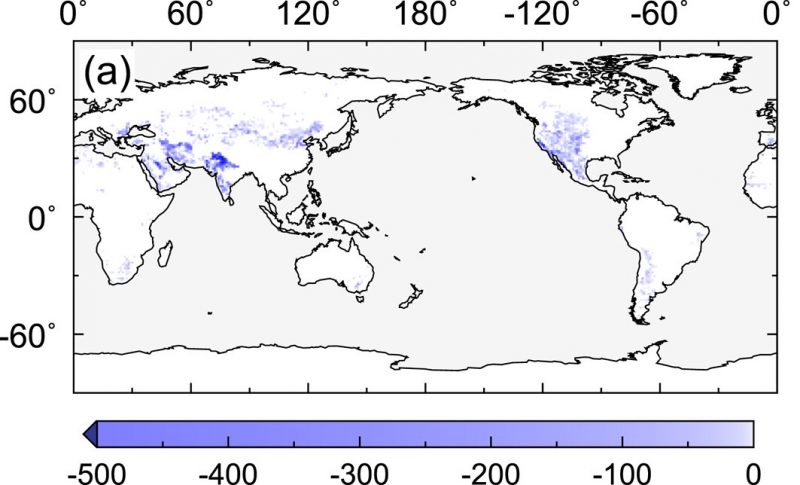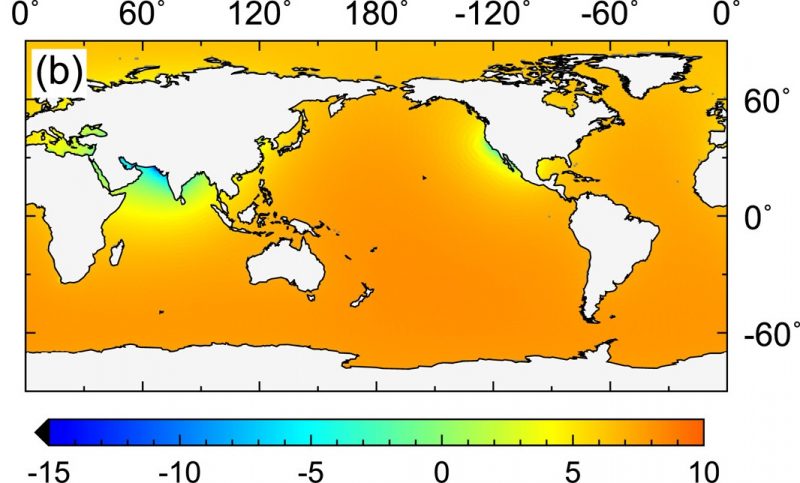
The American Geophysical Union (AGU) made a surprising announcement on June 15, 2023. It said that Earth’s 8 billion humans have pumped so much groundwater that we’ve nudged our world’s spin. Groundwater withdrawal for agriculture, mining, or household use, for example, has caused a slight-but-noticeable shift of Earth’s mass. That, in turn, has caused the Earth’s rotational pole to wander nearly a meter (approximately a yard) across the last two decades.
Specifically, humans moving large masses of water has tilted Earth about 31.5 inches (80 cm) east. And that’s only from between 1993 and 2010. The researchers published their study on June 15, 2023, in the peer-reviewed journal Geophysical Research Letters.
Groundwater pumping and Earth’s spin
The scientists worked off climate models that estimated humans have pumped 2,150 gigatons of groundwater from 1993 to 2010. Depleting this much groundwater and adding it to the surface would equate to more than 0.24 inches (6 millimeters) of sea level rise. To validate that estimate, the scientists looked at Earth’s rotational pole. The rotational pole is the axis around which Earth rotates. The distribution and weight of water can affect that spin. Lead author Ki-Weon Seo of Seoul National University said:
Earth’s rotational pole actually changes a lot. Our study shows that among climate-related causes, the redistribution of groundwater actually has the largest impact on the drift of the rotational pole.
Factoring in groundwater redistribution
Scientists first discovered that water can change Earth’s rotation in 2016. So exploring how the redistribution of water affects Earth’s spin is new territory. The researchers tried a couple models to explain the observed changes in the drift of Earth’s rotational pole. First, they factored in ice sheets and glaciers. Then, they added in groundwater redistribution. Finally, the model fit best once they included the 2,150 gigaton of groundwater redistribution.
Seo said:
I’m very glad to find the unexplained cause of the rotation pole drift. On the other hand, as a resident of Earth and a father, I’m concerned and surprised to see that pumping groundwater is another source of sea-level rise.
Where groundwater is being depleted
Plus, where the groundwater is being pumped from matters. Redistribution of groundwater in the midlatitudes has a greater impact on Earth’s spin. That is most of North America, Europe and much of Asia. And the study found that areas of greatest water distribution were in the midlatitudes of western North America and northwestern India.
The scientists said that attempts to slow groundwater depletion in the sensitive regions could:
theoretically alter the change in drift, but only if such conservation approaches are sustained for decades.
The scientists also said this change in Earth’s rotational pole won’t shift our seasons. But on larger time scales, this drift can impact climate.


Future studies on Earth’s spin
The team is thinking about studying Earth’s past polar motions. Seo said:
Observing changes in Earth’s rotational pole is useful for understanding continent-scale water storage variations. Polar motion data are available from as early as the late 19th century. So, we can potentially use those data to understand continental water storage variations during the last 100 years. Were there any hydrological regime changes resulting from the warming climate? Polar motion could hold the answer.
Bottom line: Humans haven been pumping groundwater for agriculture, mining and other uses. This movement of water from underground into the seas has caused Earth’s spin to shift slightly.
The post We’ve changed Earth’s spin by pumping groundwater first appeared on EarthSky.
0 Commentaires